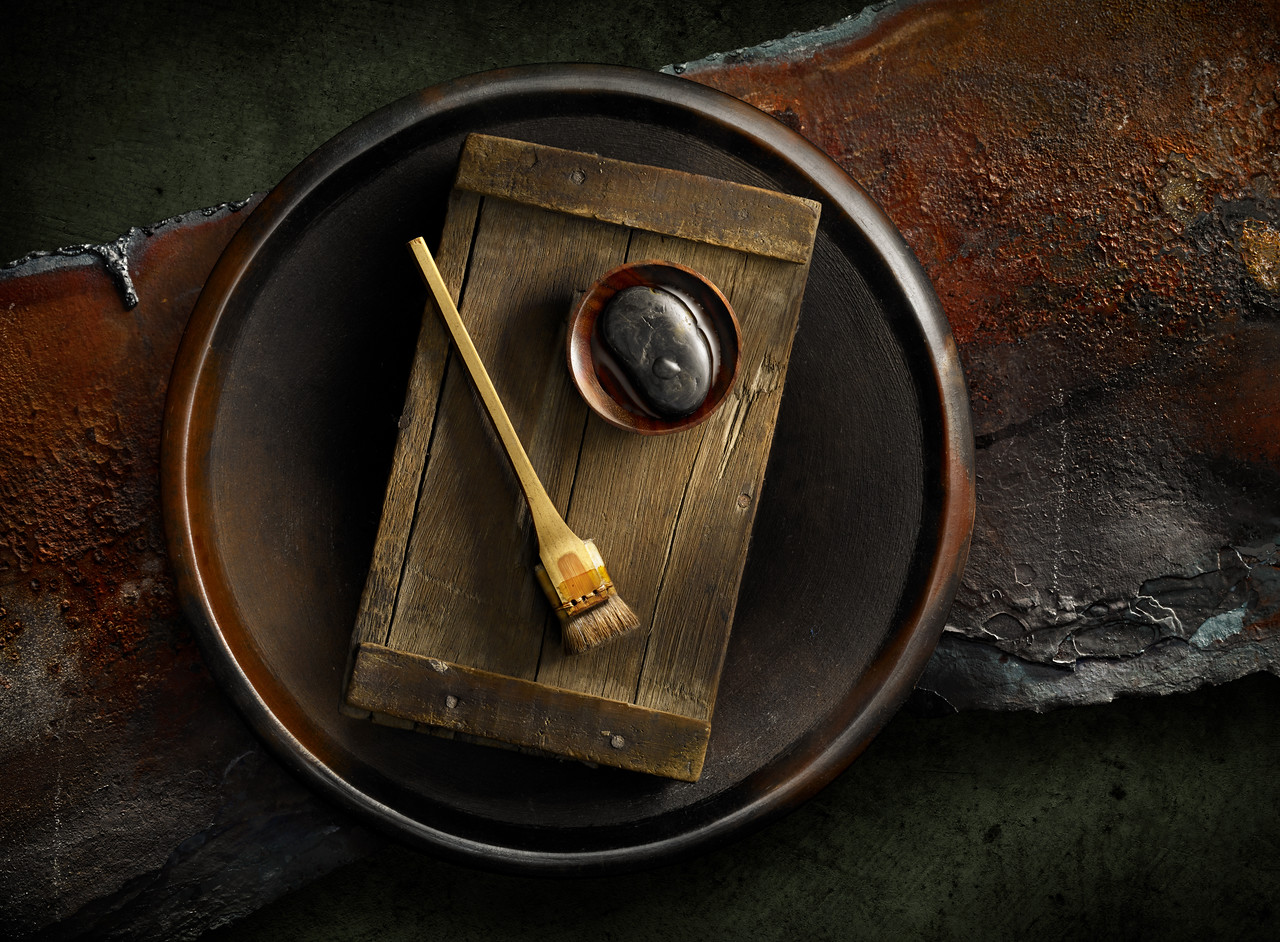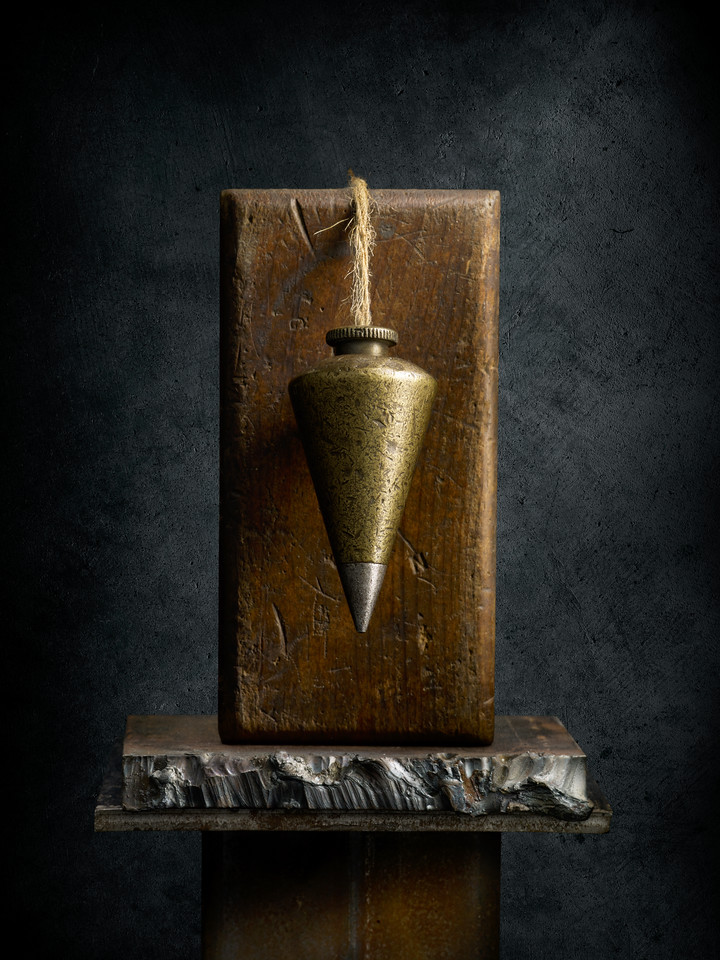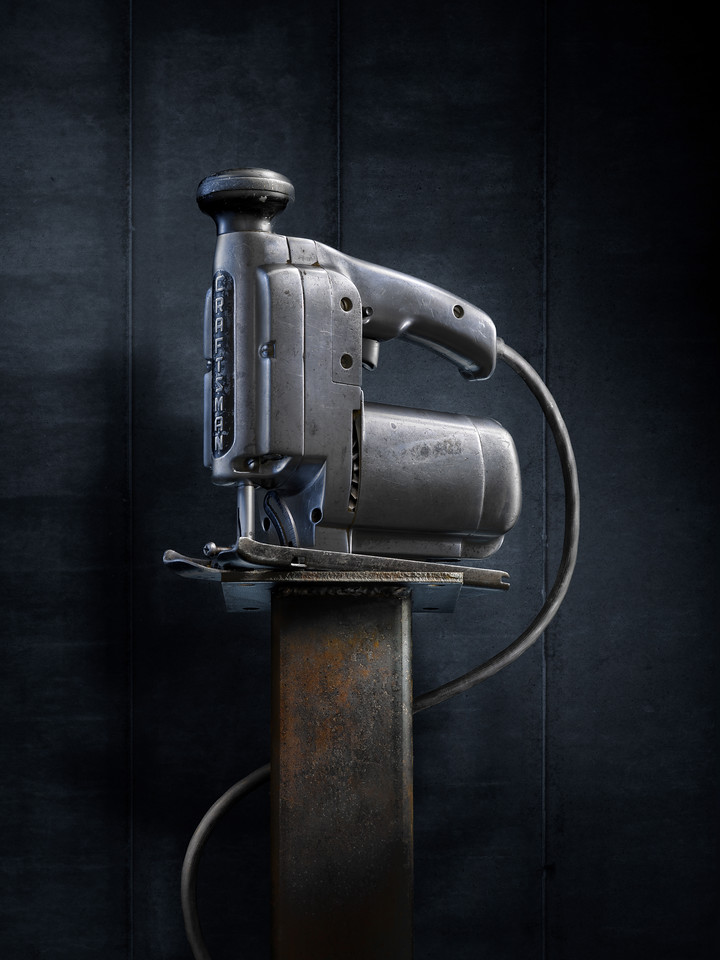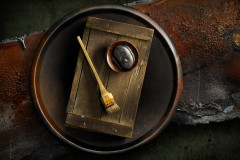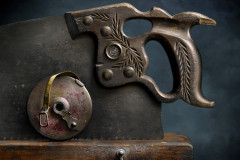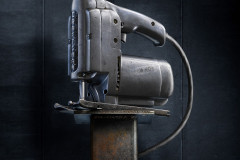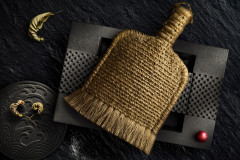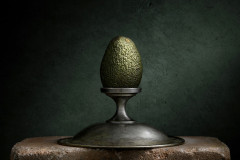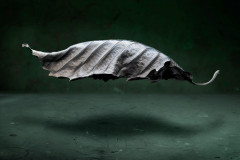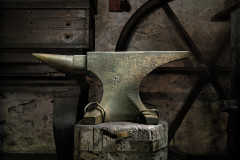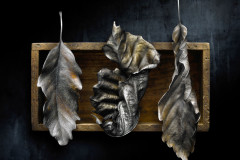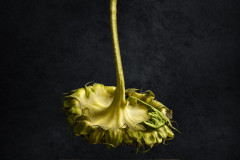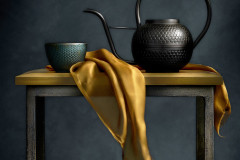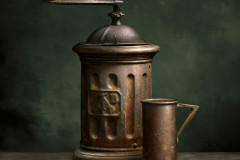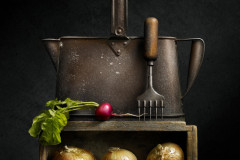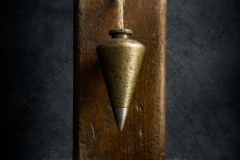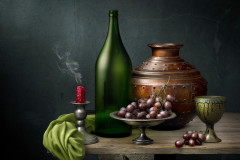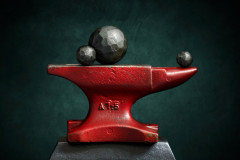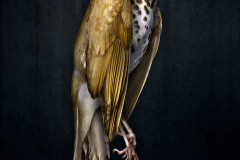Digital Transitions, Featured Photographer, Photographer Profile
Featured Photographer – Harold Ross
This month we are featuring the especially unique and elegant work of photographer, Harold Ross. Harold was recently featured in the December 2020 edition of Medium Format magazine.
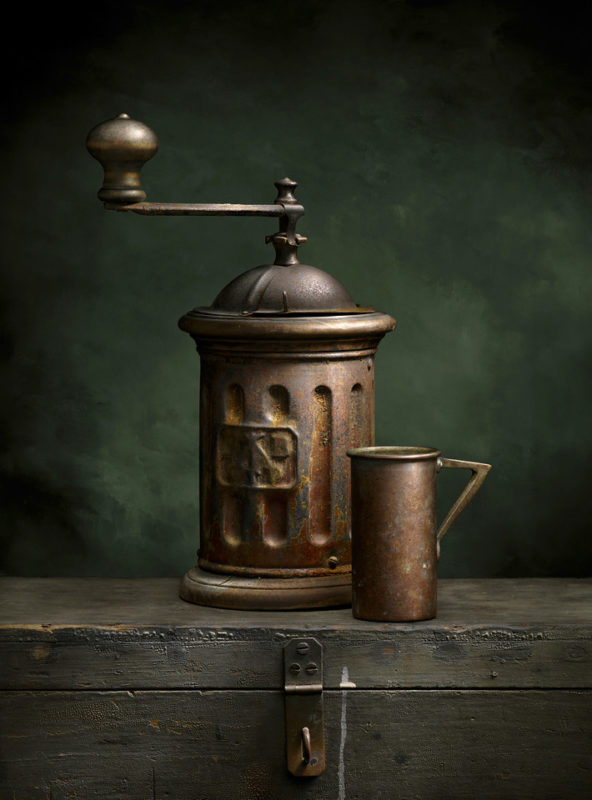
Describe your approach to photography— What makes your work unique?
I call my image-making process “Sculpting with Light”. It is light painting, and I use the light as a method of creating exceptional depth, dimension, and detail, and so I think of it more as sculpture, in a way. Photography, of course, is two dimensional, unlike sculpture, but my goal is to make photographs with the feeling of depth.
I began light painting 30 years ago in my commercial advertising business. I originally started using light painting to solve certain lighting problems that I would run into occasionally while shooting an advertisement. There were some particularly difficult areas to get light into, and I started playing around with small flashlights to solve those problems.
When my assistant and I would look at the polaroid tests, we realized immediately that the light painted areas were more beautiful than the non light painted areas! I just decided to start light painting everything in the image!
So after that point, every image I made used light painting, and of course, that means that I light painted on film, and in the advertising business, in those days, the film was actually 4×5 and 8×10 transparency film, which is really slide film. Of course, there was no Photoshop and no correction or interpretation of that piece of film…it HAD to be perfect. This was a real challenge!
What caused the greatest impact on your style of shooting?
I learned, when I was attending art school, under the tutelage of Richard Kirstel, that controlling the tonality in a black and white image was incredibly important. Of course, by pushing certain things to the dark side, and bringing other things to the light side, we are making the most important decisions when making a print. A lot of that was done through specific techniques of exposure and development of film, and then of course in the darkroom, by dodging and burning, and by using other methods to control those tonalities to make a gorgeous black and white print.
Of course, today we do this on the computer using Photoshop. I don’t dodge and burn, but I do use masking. As humans…we perceive light things as coming toward us, and dark things as receding. I use that principle a lot in my images To answer your question further, I believe that light is very transformative. That means simply by applying light in a certain way to an object, we can reveal, what I believe to be, is the essence of that object.
And for me, that is the basic form as well as the details; the surface qualities, the shape, and I hope in some way to record in my imagery the basic essence of what this object is, and by using certain lighting, and of course using certain masking techniques in Photoshop, I feel that I can get this across somehow. It is both a challenge and extremely rewarding to photograph a mundane subject in a very simple way, but to use light to make it into something extraordinary. I’ve been using light painting for 30 years and I am still excited every time I make an image!
What inspires you? Who are your influences?
I would have to name several painters, as well as several photographers. Rembrandt, of course, and Vincent van Gogh were both early inspirations to me, as well as Carravaggio, and some of the Dutch painters. One of my favorite living painters today is Henk Helmantel. As far as photographers, I would have to say that Irving Penn and Wynn Bullock are the two strongest influences for me.
I was also profoundly inspired by one of my teachers, Richard Kirstel, who was a master black and white printer and had a wonderful aesthetic vision. And of course, I must mention Aaron Jones, who was a ground-breaking light painter and visionary in photography. I am still in touch with Aaron today!
I also will sometimes sketch. Often, I look at paintings for inspiration, but normally it starts with the subject matter. I’m drawn to photograph certain subjects, and in some ways, they actually “speak” to me as to how they need to be photographed! I simply follow my own thoughts about composition, which are simply based on avoiding compositional flaws.
I want my photographs to not have tension caused by certain compositional problems. So yes, I do a lot of sketching, and this helps me layout the main composition. But sometimes I just compose without any preconceptions.
How has your work evolved over the course of your career?
There are definitely differences in shooting with light painting in the film days, versus today with digital. First of all, with film, it was a lot more difficult to get control over the brightness of every object in the image. It would be similar to using digital today, but shooting everything in the image in one capture.
I call that a compromise, in the negative sense. In other words, as we are applying light to one object, some of that light is bouncing onto other objects, and so we cannot control, to such a high degree, the look of the light on every single element in the image like we can with digital. In the film days, with a view camera, and using sheet film, I could open the lens any number of times to expose light onto the film. Sometimes this could take many minutes, or even hours, or in some cases, even days, to shoot one piece of film.
Today, with digital, I use multiple captures to optimize the light on every element in my photograph. This gives me a tremendous amount of control over how everything in the image looks. In terms of pros and cons, there are only pros to working in digital over film. It is far superior, in every way, and the end results are much more nuanced and there is a higher level of perfection and control in the digital workflow.
Describe your experience with Digital Transitions and why you chose to shoot Medium Format.
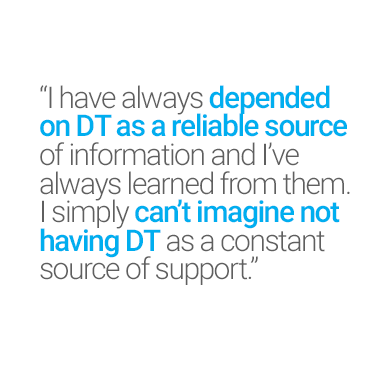 I have a long history with the folks at Digital Transitions. Going all the way back to my first Phase One camera (my first digital camera), and having just switched from film to digital capture, there was a very steep learning curve! As a commercial advertising photographer, I didn’t have the luxury of time, but thankfully, Wayne Cozzolino was not only the guy that sold me the camera (in itself a learning process on my end), but he became my digital imaging guru for several weeks or months!
I have a long history with the folks at Digital Transitions. Going all the way back to my first Phase One camera (my first digital camera), and having just switched from film to digital capture, there was a very steep learning curve! As a commercial advertising photographer, I didn’t have the luxury of time, but thankfully, Wayne Cozzolino was not only the guy that sold me the camera (in itself a learning process on my end), but he became my digital imaging guru for several weeks or months!
This was way beyond the call of duty, and I’ll never forget it. Since that time, the team at DT has always been right there, giving me immediate attention when needed, and I have always depended on them as a reliable source of information and I’ve always learned from them. I simply can’t imagine not having DT as a constant source of support, and I’m so fortunate to have them!
I personally don’t need a fast camera or a camera that shoots many frames per second, or a camera that shoots at a very high ISO. Therefore, a medium format camera makes the most sense for me. The actual camera body that I use is 25 years old! It’s an old Hasselblad with a modern Phase One medium format back. I use Phase One in particular because I enjoy the smoothness and quality of the larger sensor. Their cameras are of such high quality, and they are workhorses. Truly a professional level camera in every regard.
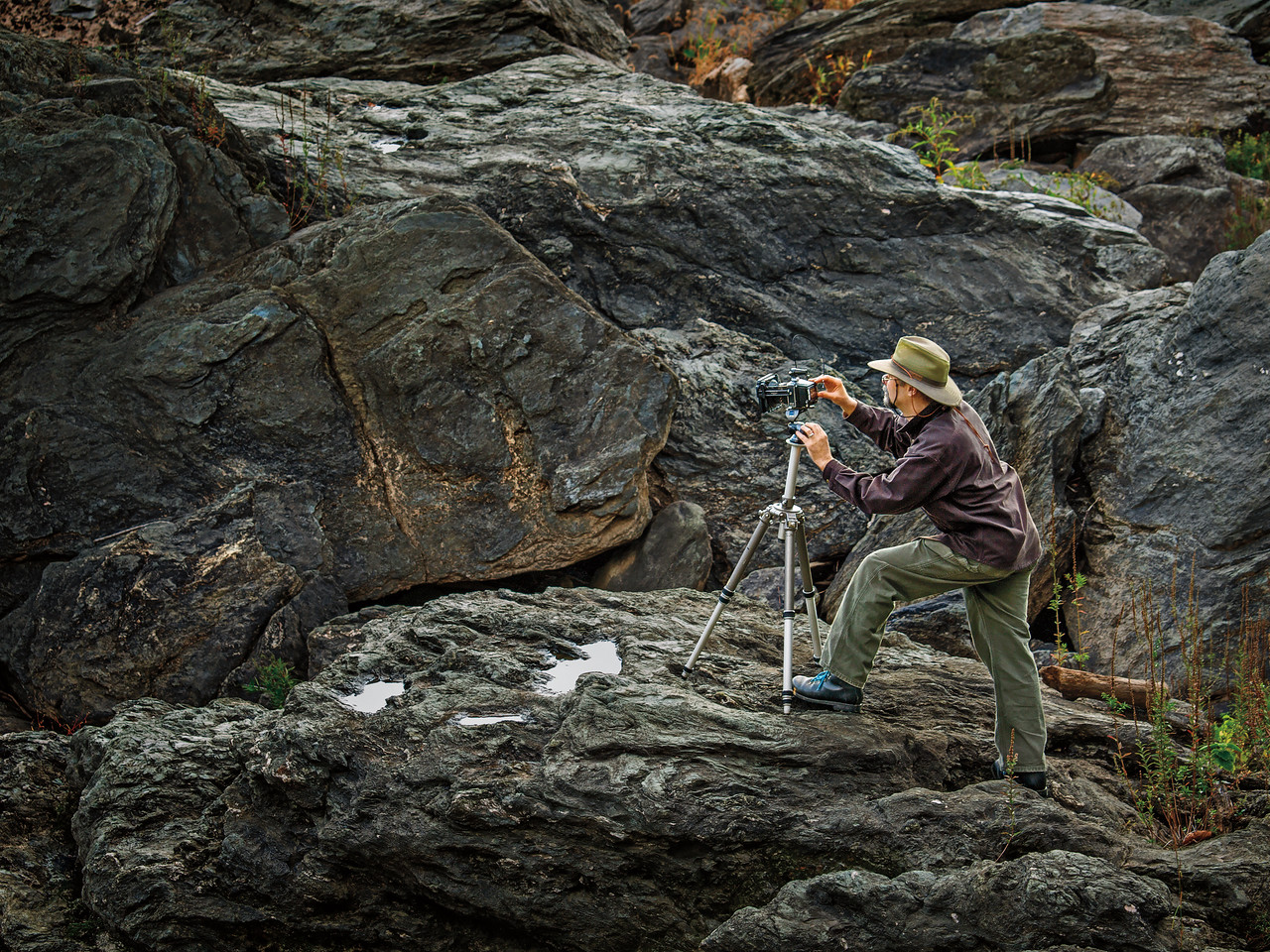
Describe your process and approach in post-production.
I feel a real connection, in a way, with the editing software, and that connection is made better through the use of a pen tablet, so there is a direct relationship between my sense of the depth of the image itself, which is a result of my connection with the editing. It’s a very personal thing in terms of the nuances of the tonalities. It’s not something I could have someone else do for me.
I use Capture One as my tethering and RAW processing software. Everything I shoot is done with tethering. I really believe that shooting tethered instantly makes one a better photographer, technically. And Capture One is, by far, the most professional tethering solution there is, and the RAW processing capabilities of Capture One are fantastic. Ninety-five percent (at least) of my students end up using Capture One after taking my workshop. I also use Photoshop for the final editing. And I simply use the tremendous power of layers and masking in Photoshop.

I don’t use any Plug-ins or filters, etc. It’s all simply the lighting that I apply, and then deciding on final tonality using masking in Photoshop. It typically takes me double the amount of time that it took to shoot an image, to do the editing. So if it takes two hours to shoot an image, it would take me roughly four hours to do the editing. This seems to be a ratio that I see a lot, and seems to be very common for my work. I’m a firm believer that one should spend more time making fewer images rather than just making lots and lots of images. For me, it is all about the quality of the image, and not the quantity of images.
How did you make the transition to professional photography, and how did making a living from photography impact your style of shooting?
I think I decided to be a life-long photographer when I was quite young. I very much enjoyed the experience of trying to simplify or create abstractions of the world into images, and I really loved darkroom work as well, so it was natural for me to continue on and stay doing something I really loved and to try to make it a career.
I’ve truly been a career photographer for my entire adult life. I got interested in photography when I was a teenager, and I decided to go to art school in order to become a fine art photographer. I attended Maryland Institute College of Art, and it was a life-changing experience for me, as I learned not only about photography but about painting and drawing and sculpture, as well. It was there that I learned about my favorite painters, and it was where I gained a deep appreciation for all of the visual arts, including sculpture.
After graduating, I taught Photography at the college level for a few years, but I decided that I didn’t like teaching in a college environment, and so I decided to get into commercial advertising photography. I started my own studio and had a commercial photography business for over 30 years. I still do commercial photography now occasionally, but only for a limited number of clients. My main work is in fine art, and I have returned back to teaching, but I teach my own workshops, as I tend to be more of an independent person, in general.
Tell us about your passion for education and what your workshops are like.
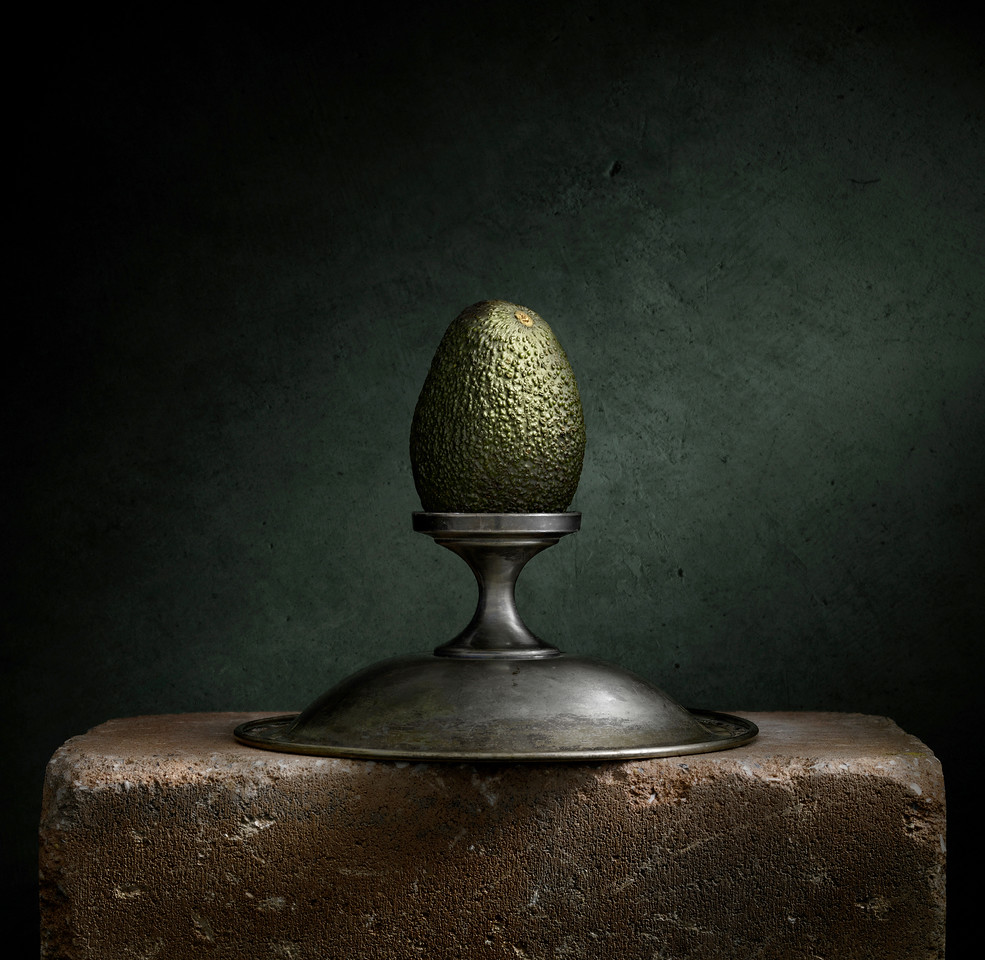
I have been teaching workshops in my process for about 12 years. Just like I believe in quality over quantity, I feel the same way about my workshops, and therefore I teach very few students at once. Currently, I am only teaching 2 people at once. This means that I can give them both almost 100% attention in order to work through the technical and aesthetic information that I teach in my workshop.
My workshops are intensive…approximately 22 hours of a tremendous amount of information, both technical and aesthetic. Not only do we explore my lighting process and my post-production process, but we also get into color balancing, managing depth of field, how to set a focus point, how to deal with diffraction in a lens, and much more. So my students not only learn my image-making process, but they learn lots of great information that will hopefully make them a better photographer.
If a student takes my workshop, they learn the nuances of applying light, how to determine the distance, angle, and motion of the light, and how the shape of an object really determines how we apply the light in terms of motion. In post-production, although I teach a lot of things, the most important thing is the application of paint to the mask. I can’t exaggerate how important this is, and these techniques are usable in all kinds of photography, not just light painting.
I’m very honored and proud that my students typically say that my workshop is the best workshop they’ve ever taken. I’ve heard this time and time again, and it is a tremendous compliment!
I have some video tutorials on my WordPress blog and YouTube channel, and I am currently working on a very large and comprehensive set of very, very detailed videos, but it is a big project. As with all things, I tend to do things to the highest degree of quality that I can, and this is taking a lot of time!
What are some interesting/surprising/invaluable things you keep in your equipment bag?
As I mentioned earlier, I use a 25-year-old Hasselblad camera. My favorite lens for studio work is the 150 Zeiss Sonnar. It’s an exceptionally sharp lens, and it has very little diffraction at the smaller apertures. I prefer a longer lens in the studio for 3 reasons…there is less distortion in terms of the shape of objects; the size relationships of the objects are more correct and “normal”; and if you use a longer lens, the background doesn’t have to be as large. For my landscape work, I use wider lenses.
What is one lesson in photography that has stuck with you?
There is one thing that I learned from Richard Kirstel, my photography professor, who was, I believe, a very brilliant photographer and creative thinker. One thing he said to me has always stuck with me: “You can ask yourself a question… Can anyone make a great photograph? Yes, occasionally. But can you do it at 2:30 PM on a Tuesday afternoon? That is what makes a professional.” This is achieved with experience and dedication to one’s own vision.
What are some additional points of advice you would give to photographers starting out?
One of the things that I would advise upcoming photographers against is to make too many images. In other words, don’t think about the number of images you’re making, but about the quality of those images. Make fewer images, but make them better, no matter how much time that takes.
We live today in a world of instant gratification, with social media being the main driver of what we do. Having that feedback on Facebook or Instagram is something that always feels good, but that, in my opinion, should not be the end goal. The end goal, in my opinion, should be to make an image at the highest level, aesthetically and technically, that one can produce!
I would also recommend being very careful from where you get your feedback. I’ve worked with photographers who have told me that someone in their family didn’t like an image, and therefore they were doing something wrong. It turned out that the person in their family knew nothing about art or photography. In social media today, we get lots and lots of people “Liking” our images, no matter what level they are at! This can be a problem. It can cause a false sense of accomplishment. Be very careful about this as you, yourself, should be the one who honestly critiques your own work. If you know someone who is accomplished, and they are willing and able to critique your work, seek them out.
You can see more of Harold’s work or on his blog, commercial portfolio, fine art portfolio, or Instagram.
GALLERY

